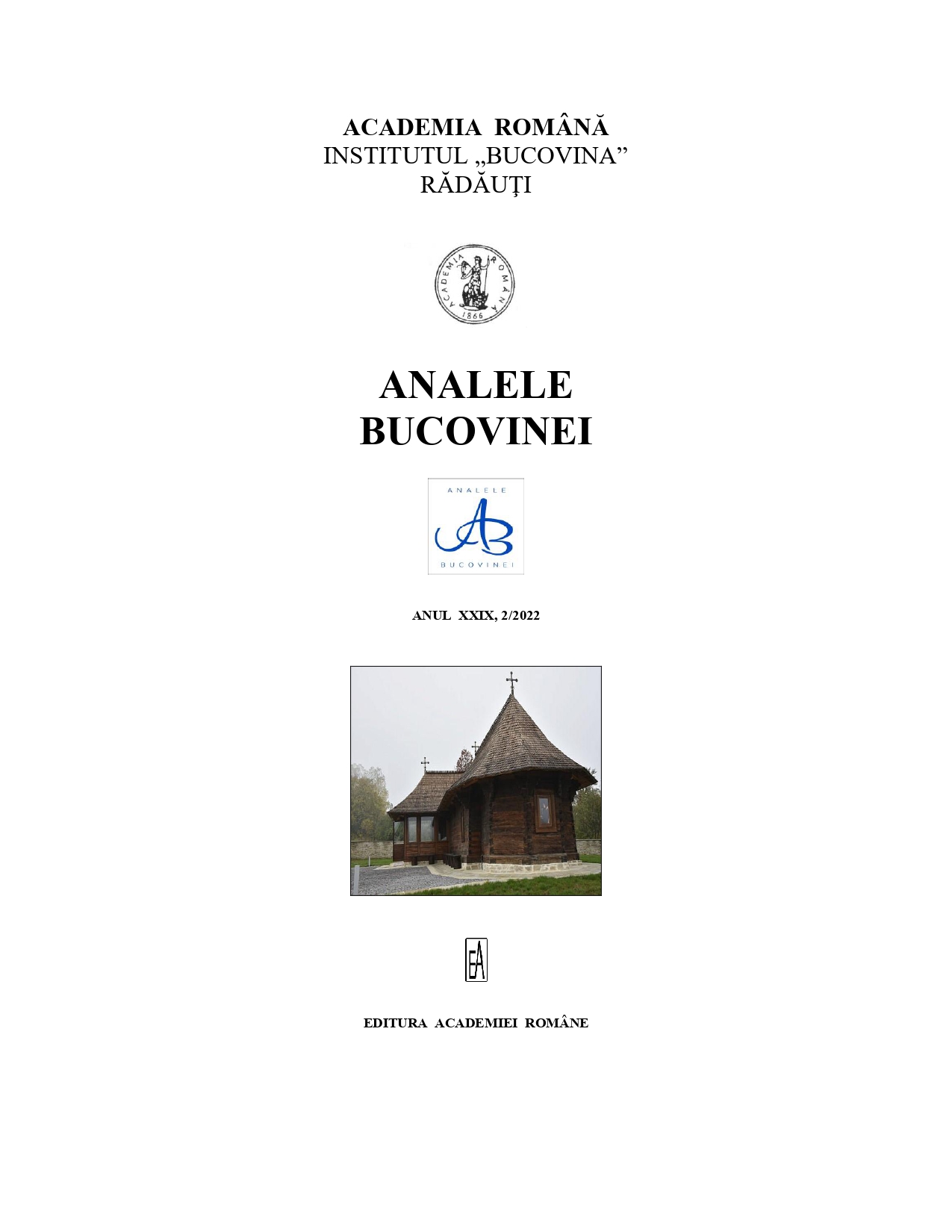INCURSIUNI BUCOVINENE PRIN INTERMEDIUL LUI V. SIMIGANOVSCHI
The Bukovinian Incursions of V. Simiganovschi
Author(s): Mircea A. DiaconuSubject(s): History, Jewish studies, Social history, Modern Age, Culture and social structure , 19th Century, Ethnic Minorities Studies
Published by: Editura Academiei Române
Keywords: Bukovina; V. Simiganovschi; peasants; colonization; Romanians; Jews;
Summary/Abstract: In the study “The Bukovinian Incursions of V. Simiganovschi”, the author discusses a multitude of topics that contribute to the realization of a detailed analysis of the peasantʼs life in Bukovina. Mircea A. Diaconu explores, as much as possible, the world of the Bukovinian village as reflected in the pages of a booklet published in 1889 by the theologian student V. Simiganovschi: A Friendly Advice. Something about the state of our people and how to improve it. A few economic advices. In this booklet, beyond the treated themes, it is also shown to what extent the peasant problem, the colonizations and the representation of the Jews are complementary problems and difficult to separate. The author of the study starts the discussion about this quasi-unknown writer and the image he offers us about the peasants from much further away, bringing into question an eloquent case from two points of view, revealing: 1. the complicated and uneven reaction of the Romanians who have been under the Austrians for decades; 2. the tendency to interpret the facts solely in oneʼs own interest.In essence, the study wants to present Simiganovschiʼs booklet both from the perspective of the authorʼs intentions and from that of the way in which, indirectly, it becomes a mirror of the peasantʼs life and, moreover, of the intentions of its author. Simiganovschi wants to offer the peasant a guide to help him in his agricultural activities and in his daily life, in order to save himself from the danger of poverty and loss of identity. At the same time, he proposes some micro-narratives with an identity character, regarding the peasantʼs attitude towards school, towards drinking, towards daily life. Inevitably, considering that the blame for the fallen state of the peasant belongs to the Jews, the booklet is also considered a small manual of anti-Semitism, because the intention of awakening the national conscience is fatally doubled by blaming the Jewish immigrants in Bukovina.For contextual clarifications, the author also resorts to other related “documents”, which show how to configure the image of the Romanian peasant in the 19th century and the beginning of the 20th century. Thus, other references are also brought into question, mentioned being the writings of Ion Budai-Deleanu, of Gabriel Splény, the first governor of Bukovina, and also the literary texts of the Bukovinian priests IracliePorumbescu and Constantin Morariu.
Journal: ANALELE BUCOVINEI
- Issue Year: 59/2022
- Issue No: 2
- Page Range: 481-507
- Page Count: 27
- Language: Romanian

